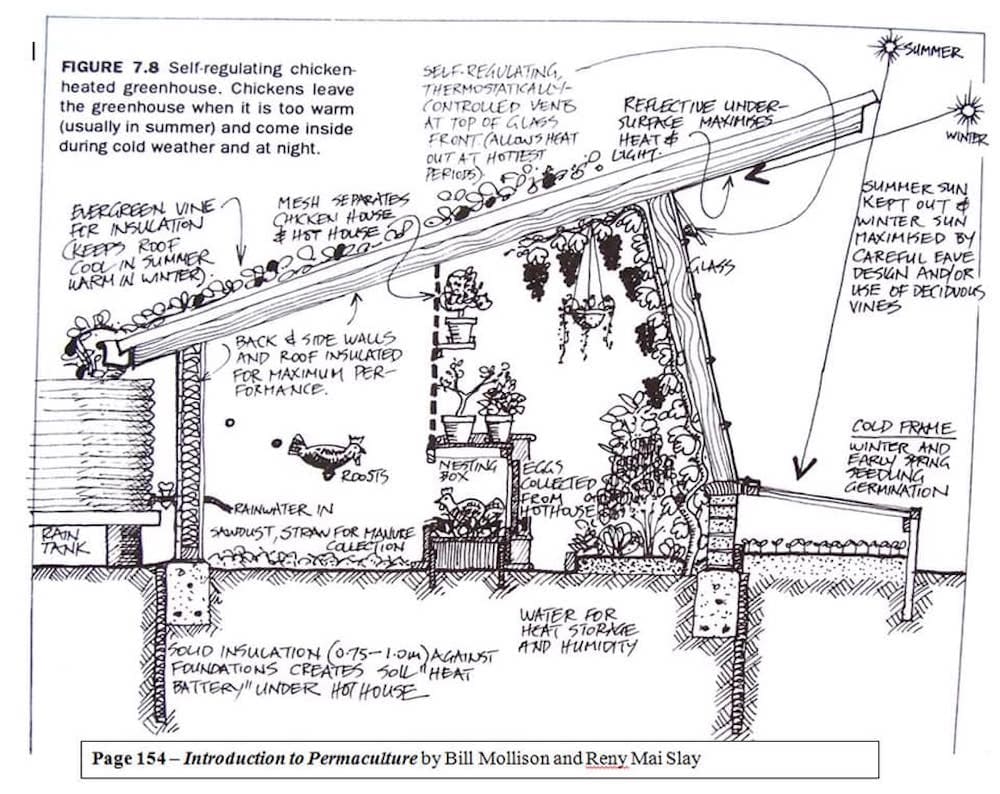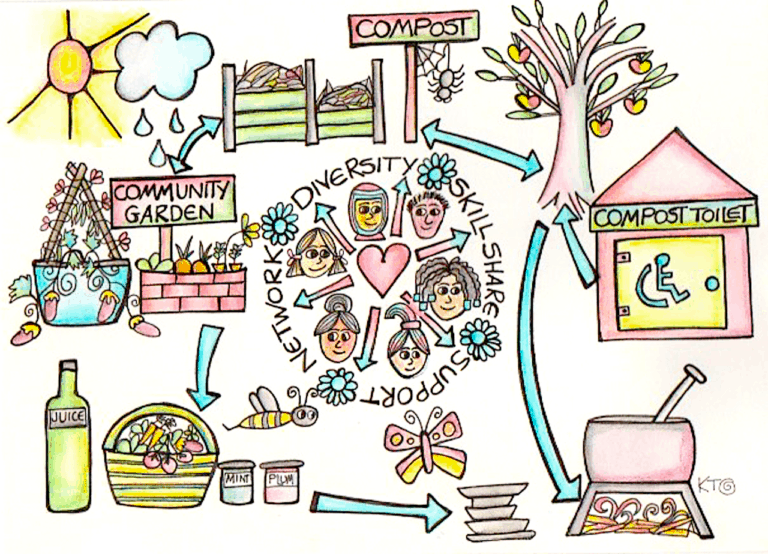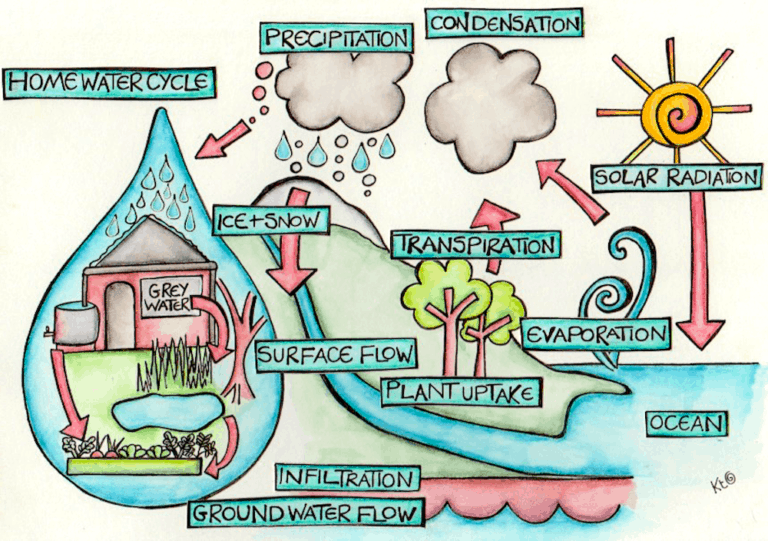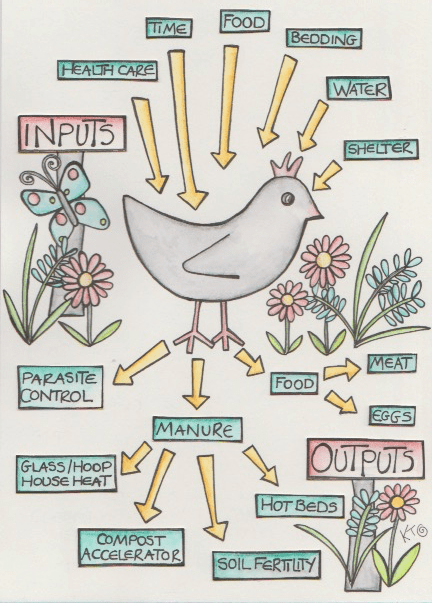

Pros and Cons of Barnyard Birds
Barnyard birds add character and entertainment to the homestead, eat weeds and slugs, and sift and manure our leaf-mulch for us before we add it to the garden beds. Interacting with these and the other animals on our farm brings us closer to nature and brings our farm closer to a closed-loop fertility cycle.
However, if we try to add birds to a site, with big fantasies about all the abundance they bring, but without integrating serious considerations for the time, money, and other inputs those birds require, disaster and disappointment could easily ensue.
Adding domestic birds – such as chickens in Permaculture farms – to a garden whether urban or rural, brings in life, fertility, and beauty. These benefits can help bring an average garden closer to paradise, but they are sometimes offset by the (often unforeseen) difficulties with these birds.
Birds are smelly and dusty, and even a small flock will ruin a nice garden within a few minutes, given the opportunity. Here’s a quick-reference chart of the pros and cons of barnyard birds to help you decide.

Chickens
Pros
Comfortable in a small coop or “chicken tractor.” Steady flow of eggs. They will weed an established perennial garden or spread mulch. They are tameable, trainable, and quite smart.
Cons
Very noisy! And not just the roosters! Even the hens, from dawn to dusk, all day, every day. They scratch up baby plants if let loose in a young garden. Easily killed by natural predators.
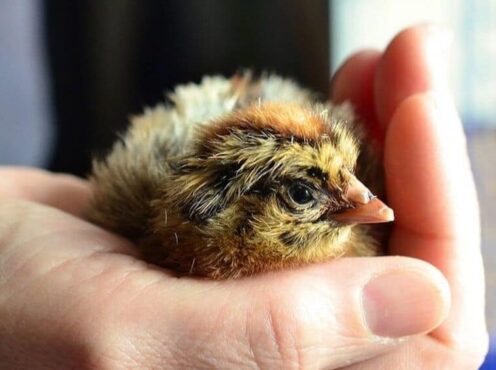
Ducks
Pros
They eat slugs and snails. Eggs are big and delicious. Ducks are funny to watch and quite sociable, and they come in at least as many varieties as chickens.
Cons
Ducks are fairly stupid, so it can be difficult to get them to go where you want. They love to eat salad and will trash your garden badly. It also bears mentioning that male ducks are prone to gang-raping females. So, there’s that.
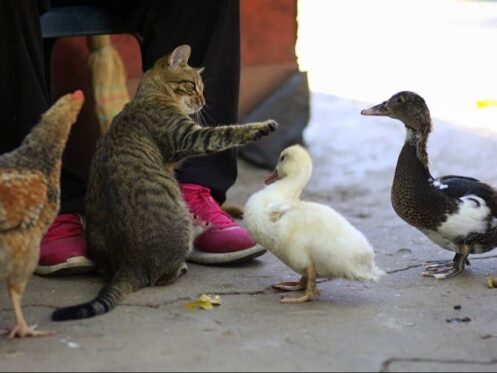
Geese
Pros
Beautiful, graceful birds, geese are my favorite. The young goslings are very easy to tame. Goose eggs are edible and very rich, and the hard shells last forever when painted.
Cons
They poop a LOT, so if they’re free-range, it can get nasty real fast. They can also be aggressive if not handled when young and they will bite you—hard!
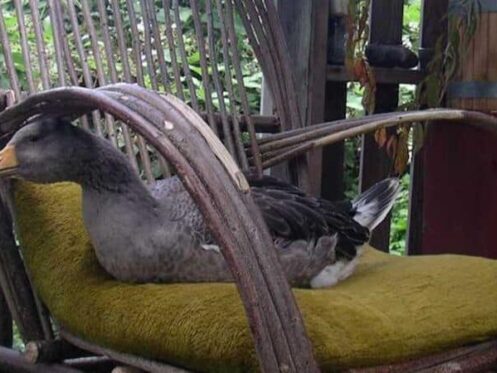
Turkeys
Pros
Delicious and nutritious, and you get a lot of meat from each bird. You also get tons of gorgeous feathers, even if your turkeys are just for pets and insect control.
Cons
Turkeys are huge and make a lot of poop in barnyard setting. They can be aggressive, can fly, and will go feral if you let them. They will chase children and demolish the garden. Not recommended for small holdings.
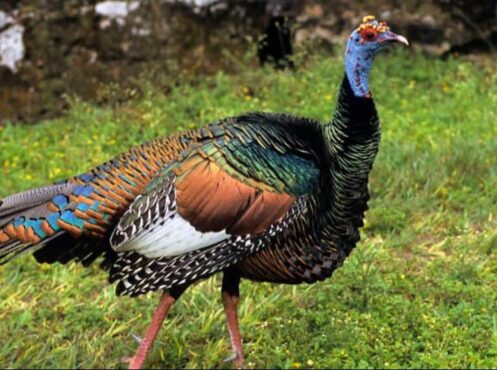
Guinea Fowl
Pros
Great meat birds because, at four months old, they can weigh several pounds. Baby chicks are sweet and adorable and make cute noises, but…
Cons
. . . grown guinea fowl make a hellish screeching sound similar to that of a busted fan belt on a car, and they will sustain it for hours.
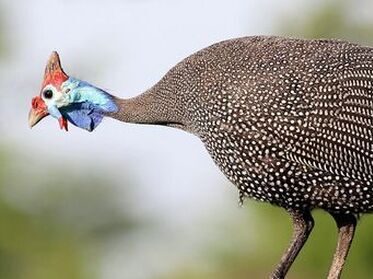
Pheasants
Pros
Stunningly beautiful, very wild, relatively low-impact when left loose in the garden because they prefer bugs to plants.
Cons
They often run away, and male pheasants can be very violent (read: rape-y) towards chickens and other birds.
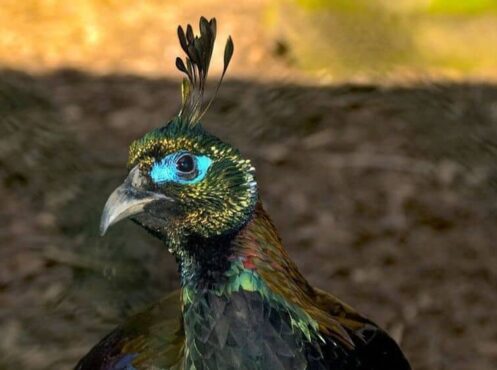
Quail
Pros
Said to be delicious, though I can’t see how such a small morsel could be worth the trouble. Their call is sweet and super cute.
Cons
Impossible to tame and so tiny that they usually run away or get eaten by predators. Build quail habitat in your zone 4, but don’t bother trying to cage them.
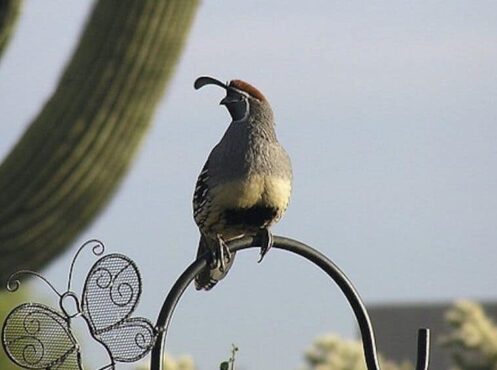
Chukars
Pros
Similar to quail but larger and more beautiful, with a wonderful call. Chukars are lovely in a garden setting and can live well with chickens.
Cons
Like quail and pheasants, chukars will not put eggs on your table. Unless you plan to eat them, they are just for looks and insect control.
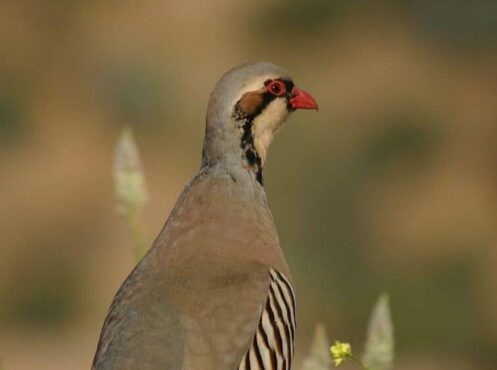
Pigeons
Pros
Great poop; very compatible with a small garden setting. Beautiful and interesting to listen to.
Cons
They can breed like rabbits and will often move into an area where you don’t want them.

Peacocks
Pros
Fabulous in so many ways—who doesn’t love the idea of peacocks drifting about the yard? The feathers are valuable for many uses, and they will breed readily, given enough room.
Cons
Again, very difficult to tame—our peacocks went feral and live high in the conifers on the outskirts of our farm. We hear their calls in the sunset…
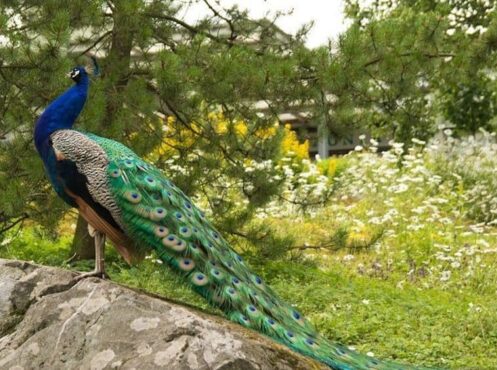
Emu
Pros
Even more fabulous, and highly prized for their feathers, meat, and oil. Easily adapted to temperate climates and very tameable.
Cons
Untamed emus can be vicious and, since they have claws like a velociraptor, they could easily kill a dog or human. Get them young and treat them right to make sure they aren’t dangerous.
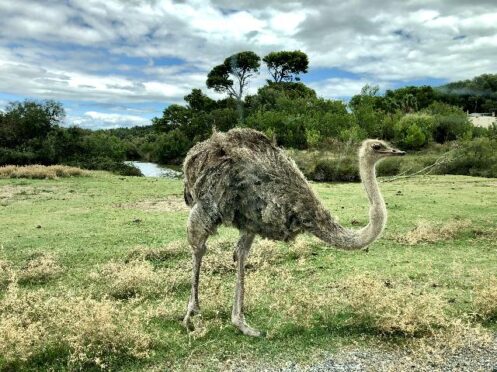
The Chicken Tractor
This section by Marit Parker
Free-range chickens in permaculture farms are a joy to behold – until they turn your seed bed into a dust bowl, hide the eggs in a thorny thicket and get eaten by a fox. However, shutting them in a permanent run means your chickens will be scratching the same bare earth every day. Meanwhile, your veg bed has pests they could be eating.
One solution is the chicken tractor – a moveable chicken coop and run. If you make one yourself you can design it to:
- Suit the number of chickens you have
- Fit over your veg beds
- Move easily around other parts of the garden
For happy chickens in permaculture farms, you need to think about what chickens need. Their wild ancestors, the red jungle fowl, roost in trees, which is why chickens like having perches to roost on in the coop and enough space in the run to stretch their wings. Hens like having nesting boxes where they can hide away to lay eggs.
For happy humans, you need to think about how the chicken tractor will be moved, and have easy access for cleaning the coop, feeding the chickens in permaculture farms and collecting the eggs.
This design, made from off-cuts of wood, is quite heavy so it has wheels at one end. The mesh floor of the coop is a clever idea, but in some climates a wooden floor is needed to protect the chickens in permaculture farms from cold winds and driving rain.
Here are a couple of examples:
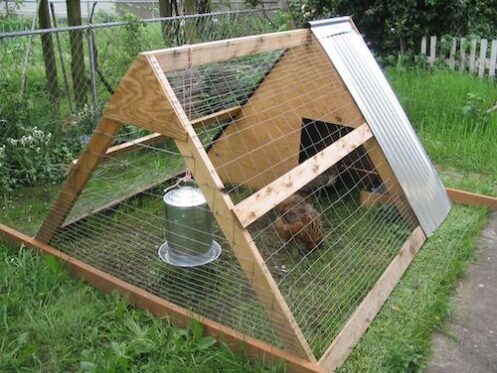
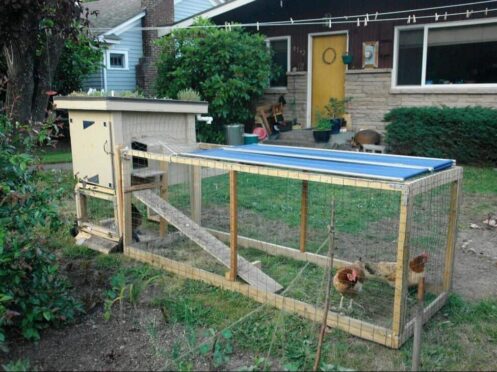
Alternatively, it is possible to make a lightweight version using plastic pipe. However, be aware that this is not as sturdy and may leave your chickens exposed to attack by dogs or predators.
This video includes several hints and tips for clever designs for keeping chickens in permaculture farms.
Want to learn more about this and other topics related to permaculture, sustainability, and whole-systems design?
We offer a range of FREE (donations optional) online courses!

